The pancreas is an important part of the body, the only organ that produces insulin. In addition, she is responsible for the production of gastric juice. A number of different factors can cause problems with this part of the body. How does a person’s pancreas hurt and what symptoms can indicate problems with this organ? Is it possible to relieve painful manifestations at home before the arrival of a doctor? We will consider these questions further.
Material Content:
Where is the pancreas in humans?
It would seem that if the gland is called the pancreas, it is logical that it is located under the stomach. However, this statement is true only for those cases when a person is lying. In other positions, the organ is located “behind” the stomach, closely adjoining it and the duodenum.

- If you look at the structure of a person from the spine, this gland is located at the beginning of the lumbar region.
- As for the view from the side of the peritoneum, the pancreas will be located about 4-5 cm above the navel.
This internal organ consists of 3 parts: the head, body and tail. The head of the gland is located in the area of the duodenum 12 (the latter covers the pancreas, as if a horseshoe). The body of the organ “hides” behind the stomach, and the tail is adjacent to the spleen.
It is interesting! The formation of the pancreas begins at 5 weeks of fetal development.
In a newborn child, this organ reaches a length of 5 cm, in a one-year-old - already 7 cm. The final size (15 cm) of iron acquires by 16 years.The normal size of the organ is considered to be a range of 15-22 cm, all other indicators are pathology.
What diseases does pain indicate?
The main problem is that the symptoms characteristic of pancreatic diseases are also characteristic of alternative variants of diseases. This can lead to an incorrect diagnosis and the appointment of an inappropriate treatment. As a result, precious time is lost for the treatment of the gland.
It is interesting:cardiac insufficiency of the stomach - what is it
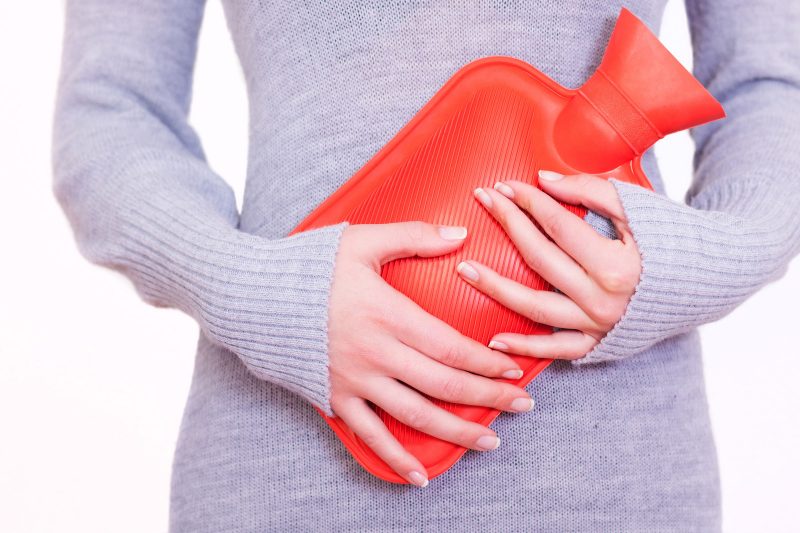
The most common pancreatic disorders are:
- pancreatitis
- diabetes;
- cancer;
- cyst;
- pancreatic necrosis;
- cystic fibrosis.
The last 3 types of diseases are quite rare.
How does the pancreas hurt?
It is difficult for a person who has never before encountered difficulties in the functioning of the pancreas to recognize that the problem lies precisely in it. Where does the pancreas hurt? The elongated shape of the organ can provoke pain in different places. So, an inflamed head provokes a focus of pain on the right and many attribute it to the liver. Pain in the remaining departments creates discomfort in the hypochondrium. Cases of acute pancreatitis completely make the character of pain shingles.
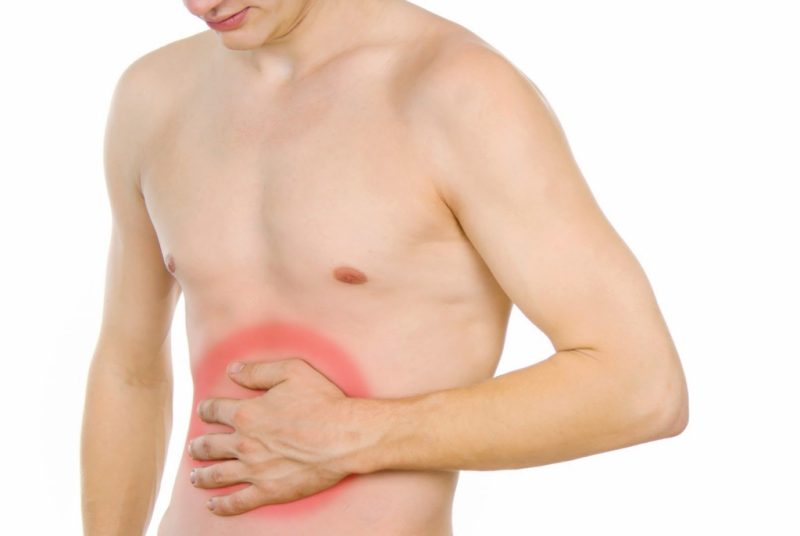
The main symptoms of pancreatic problems are:
- High temperature (from 38 degrees).
- Attacks of nausea, turning into vomiting with a sour taste.
- Decrease in appetite or its absence at all (often causes sharp weight loss).
- Shingles (either in the left hypochondrium). The discomfort is so strong that a change of position (lying, sitting or standing) cannot significantly alleviate the suffering.
- In the left hypochondrium there is a feeling of fullness. This symptom worsens after eating or drinking, as well as in the morning.
- Great thirst.
- A yellowish tint of skin and eye proteins.
- Increased sweating.
- A feeling of bitterness in the mouth.
- Sometimes a shock condition is observed.
Often, pain intensifies after eating, and if you do not eat, they do not make themselves felt.
In addition, the patient may have symptoms of toxicosis, i.e., a persistent aversion to a number of food products.
Symptoms and main signs of organ pathologies
Most often, against the background of pancreatic problems, diabetes mellitus or pancreatitis develops.
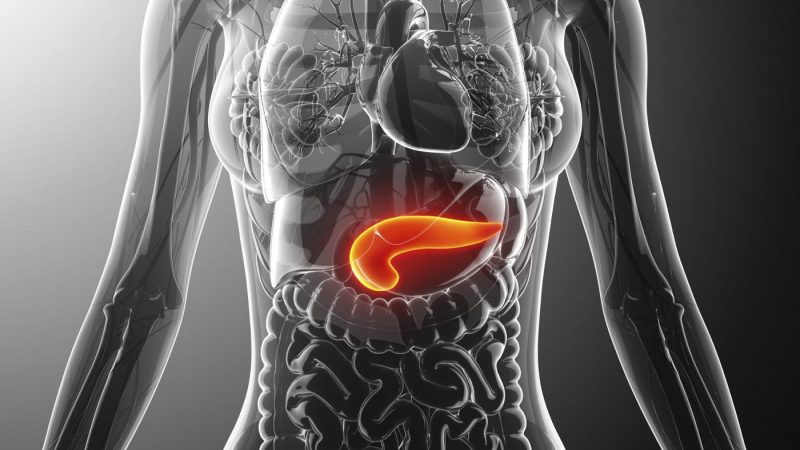
Diabetes mellitus is a pancreatic pathology caused by insulin deficiency.
Its main symptoms are:
- strong and sharp weight loss for no apparent reason;
- tingling sensation in the limbs;
- visual and hearing impairment;
- constant feeling of unquenchable thirst;
- long wound healing period;
- feeling of constant intense fatigue.
Pancreatitis is a process of inflammation of the gland, provoked by blocking its duct. The disease can be acute or chronic.
Symptoms of acute pancreatitis:
- a sharp increase in temperature;
- vomiting
- diarrhea;
- tachycardia;
- pain in the navel.
The chronic form is characterized by the following symptoms:
- weight loss;
- pain in the hypochondrium (aggravated by physical exertion);
- sleep disturbances;
- rejection of fatty foods.
More materials:pancreas: where is it
Diagnostic measures
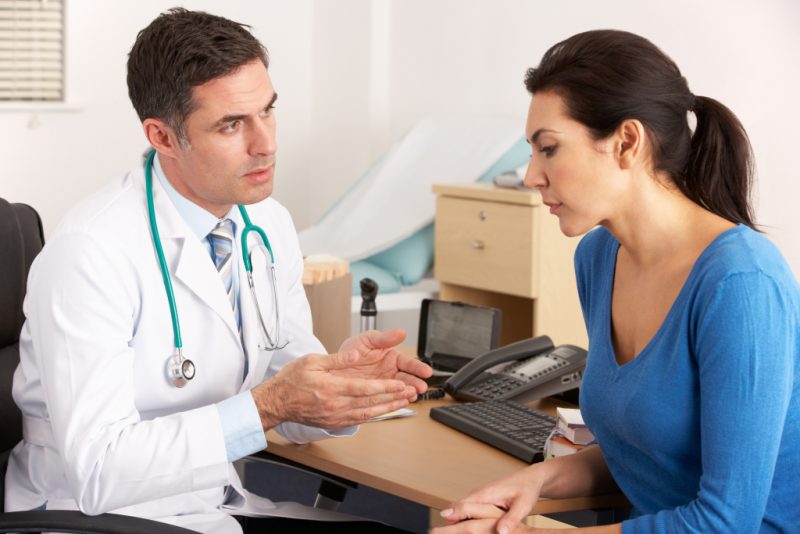
Diagnosis of pancreatic problems includes a number of measures:
- Visual examination of the patient by a doctor. The specialist interviews the patient, monitors the color of the mucous membranes and skin.
- Palpation of painful areas. For such an examination, the patient first takes a position lying on his back, and then on the left side. When the pancreas is affected, pain in the side is usually less acute.
Also, the doctor usually prescribes a list of necessary tests, including:
- General blood analysis. Disorders of the gland usually cause an increase in white blood cells.
- Detection of levels of tripase, amylase and lipase in blood serum.
- In addition, a study of liver enzymes is recommended: alkaline phosphatase, bilirubin and ATL.Increased rates may indicate an attack of pancreatitis caused by the movement of gallstones.
- Urinalysis to detect amylase levels.
- Analysis of feces for excessive fat, trypsin and chymotrypsin.
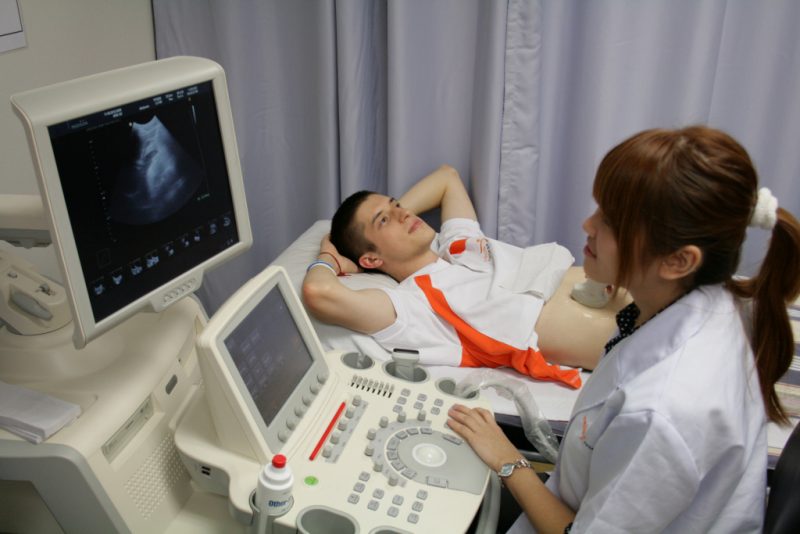
Additionally, instrumental diagnostic methods are used:
- Roentgenography. With its help, it turns out whether iron is enlarged or not.
- Ultrasound Helps to study the features of the body contours, determines the presence of gallstones, the state of the excretory duct.
- MRI It is used to clarify the diagnosis, determines the presence of pancreatic necrosis or fluid in the peritoneum.
What to do if the pancreas hurts?
Of course, the first thing to do when determining what the pancreas hurts is to consult a specialist.
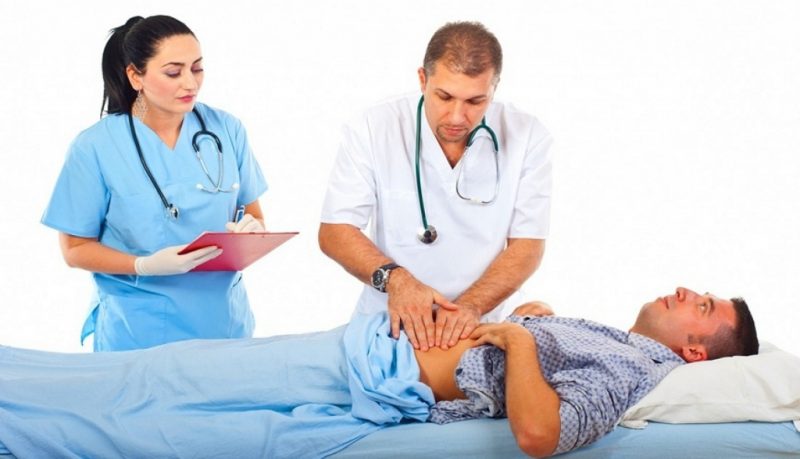
Important! Self-diagnosis, as well as self-medication can be hazardous to health.
But you can eliminate the pain and alleviate the condition yourself at home.
Dull, aching pain is eliminated gradually. Often, discomfort is caused by an overload of the gland.
In order to reduce the burden on the body, it is worth following a number of recommendations:
- Remove (or minimize) fatty foods from the diet.
- Adhere to food fragmentation.
- Exclude alcohol.
- Stop smoking.
- If you are overweight, lose weight.
- During meals, take pancreatin additionally.
Tip. As a drug therapy against manifestations of general (abdominal) abdominal pain, Drotaverinum, No-shpa, Paracetamol, etc. are used.
The intake of such drugs must first be discussed with your doctor.
During attacks of acute pain in the hypochondrium, you should immediately call a doctor. The pain is so intense that the patient can be sent to a hospital where he will undergo treatment with narcotic analgesics.
But before the arrival of the doctors, you need to hold out, because the pain at some point can become simply unbearable. Without wasting time, it is worth starting a fight against pain.

The best way is non-drug methods of alleviating abdominal pain.
- Take a knee-elbow position. Thus, the pressure of the pancreas on the solar plexus is reduced.
- Apply ice to your stomach. Helps reduce organ activity.
- Try to limit physical activity, it is best to remain without movement.
Pain in the pancreas often signals various malfunctions in the body, and in some cases serious diseases. Pain in the hypochondrium, worn, girdle, aching, or acute, is an occasion for immediate medical attention. Based on the diagnosis, the specialist will determine the pathology and identify the optimal treatment tactics. If the gland disease is chronic, the patient should clearly know the list of medications suitable for alleviating the symptoms of the pathology. All medicines should be prescribed by a strictly attending physician.












